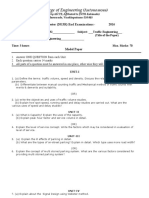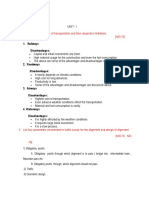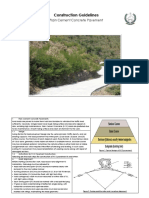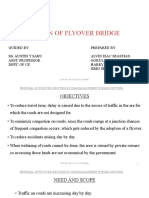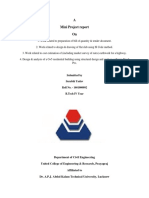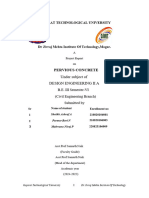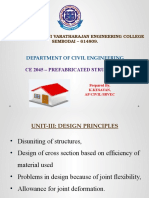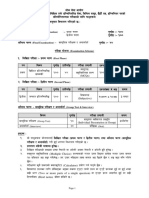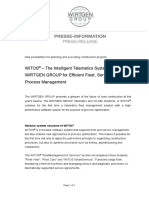Smt Kamala & Sri Venkappa M Agadi College of Engineering & Technology,
Lakshmeshwar-582116
(Approved by AICTE, New Delhi & Affiliated to VTU Belagavi, ISO 9001:2015 Certified)
______________________________________________________________________________
Department of Civil Engineering
MODEL QUESTION PAPER Max. Marks: 100
Sixth Semester B.E. Degree Examination
Pavement Design (15CV833)
Time: 3hrs
Note: 1. Answer any FIVE full questions, choosing one full question from each module.
2. Assume any suitable data if necessary.
MODULE-1
1 a Describe the desirable properties of pavements? (10 Marks)
b Explain the strategies adopted in pavement design? (10 Marks)
OR
2 a Bring out the characteristics differences between flexible and rigid (10 Marks)
pavements?
b List the assumptions and limitations of Boussinesq’s theory? (10 Marks)
MODULE-2
3 a Explain the ESWL by equivalent deflection criteria concept with neat (10 Marks)
figure?
b Design the pavement thickness / section by Kansas method using the (10 Marks)
following data
Wheel load = 4100 kg
Radius of contact area = 15 cm
Traffic coefficient = 1.5
Rainfall coefficient = 0.9
Design deflection = 0.25 cm
E- Value of subgrade soil = 100kg/cm2
E- Value of base course = 400 kg/cm2
E- Value of 7.5 cm thick bituminous concrete course = 1000 kg/cm 2
OR
4 a Design a highway pavement for a wheel load of 4100 kg with a tyre (10 Marks)
pressure of 5 kg/cm2 by Mcleod method. The plate bearing test carried
out on subgrade soil using 30 cm diameter plate yielded a pressure of
2.5 kg/cm2 after 10 repetitions of load at 0.5cm deflection.
b Explain the design of flexible pavement by revised CBR method as per (10 Marks)
IRC quick lines
� Smt Kamala & Sri Venkappa M Agadi College of Engineering & Technology,
Lakshmeshwar-582116
(Approved by AICTE, New Delhi & Affiliated to VTU Belagavi, ISO 9001:2015 Certified)
______________________________________________________________________________
MODULE-3
5 a List the general causes of flexible pavement failures and describe the (10 Marks)
failures in sub base and base coarse
b Explain the step by step procedure of conducting Benkleman beam (10 Marks)
deflection studies for evaluation of flexible pavement surface
condition?
OR
6 a Briefly explain the typical types of flexible pavement failures? (10 Marks)
b Explain the application and limitations of ground penetrating radar? (10 Marks)
MODULE-4
7 a Calculate the stresses at interior, edge and corner locations of a cement (10 Marks)
concrete pavement by a westergaard equation from the following data.
P= 5100 Kg, E=3x105kg/cm2, h=18cm, poisons ratio=0.15, K=6kg/cm 3,
radius of contact area=15cm
b Explain the following terms in brief (10 Marks)
a) Warping Stress
b) Frictional Stress
OR
8 a Explain critical location of the load with reference to the slab? (10 Marks)
b Explain the design factors for runway pavements? (10 Marks)
MODULE-5
9 a What are the factors considered in design of rigid pavements? Explain (10 Marks)
any three of them?
b List the typical failures in rigid pavements and explain any three of (10 Marks)
them?
OR
10 a With sketches describe the various types of joints and their (10 Marks)
requirements in rigid pavement?
b Explain functional evaluation by visual inspection and unevenness (10 Marks)
measurements?
Prepared by
Ms. Premlatha K Naidu
Department of Civil Engineering
Smt. Kamala & Sri Venkappa M Agadi
College of Engineering and Technology
Lakshmeshwar-582116



